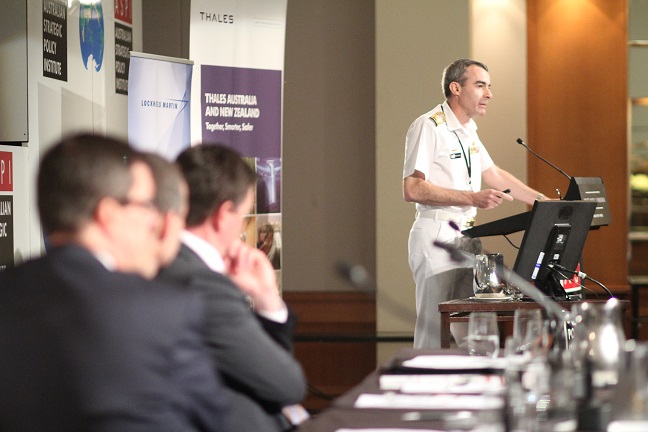Everyone seemed to miss it—a statement in public (at ASPI’s Submarine Choice conference) from the chairman of the Western world’s largest and most successful builder of conventional submarines: a fleet of 12 large state-of-the-art boats would cost around $20 billion. That’s $16 billion less than ASPI’s own estimate and was given by Dr Hans Christoph Atzpodien, the head of ThyssenKrupp Marine Systems. Since his company has built over 180 submarines since 1960, he should know about submarine costs.
Bizarrely, his estimate appears to have been totally ignored. I saw that my friend and colleague Stewart Cameron has written in The Australian that 12 submarines will now cost around $40 billion. That estimate was repeated by Alan Dupont in the same newspaper and subsequently also appeared in the Fairfax media.
So the estimate of someone who knows well is ignored, while the comparative ‘guesstimate‘ of $40 billion is well on its way to being entrenched as ‘fact’.
A conspiracy theorist might think this is all a huge collective effort to make Australians feel that submarines are so costly and so difficult to buy that we need to procrastinate for even longer before making hard decisions. That was certainly the distilled essence of the British speakers at the conference, who were the lead of the Integrated Project Team and the design managers for the program and revealed, to the quiet amusement of some in the audience, that after a couple of years of study—and undoubtedly millions of dollars in fees—they haven’t even reached the ‘pre-concept’ phase of their work.
Some sense of direction was provided to the audience by project director RADM Greg Sammut (pictured) in a rare and welcome public address. But in arguing his apparent preference for a new, large and complex design, he seemed to misapply some of the lessons of history, describing long-range US submarine operations in the Pacific during World War II and contrasting them favourably with Australia’s own likely concept of operations. Similarly, he was dismissive of the relevance of shorter-range German operations in the North Atlantic.
Long-range US submarines (many based in Fremantle) didn’t somehow travel to the far north Pacific and park themselves off the coast of Japan. Instead, they analysed Japan’s sea lines of communication and then went about aggressively sinking every Japanese ship they could find—especially around the Philippines. In other words, they recognised the importance of choke points, just as the Australian Navy nowadays would attempt to exploit the choke points to be found in the Indonesian archipelago. Moreover, students of history will know that even more damage was done to the Japanese war machine in April 1945 by a campaign of mining by low-flying B-29s, named frighteningly and completely accurately ‘Operation Starvation’. In other words, the US looked beyond the use of submarines alone to achieve its strategic goals.
A huge amount came out of the conference and ASPI is to be congratulated for being able to attract such a high quality list—as well as quantity—of speakers. Observers of the event will be unpacking the data for months to come. The depressing part was that Defence’s future submarine project, SEA 1000, still seems to lack purpose and direction, with little to show for the previous five years of effort and money.
But from my industry background, let me just say: it shouldn’t be this hard. Here are the necessary steps:
- Navy needs to decide the maximum distance from a home port that they need to operate (and consider the possibility of operations being conducted from Guam and Darwin as well as HMAS Stirling); how long they should sensibly like to remain on station, and with what sort of weapon load;
- That should be translated into a Request for Tender;
- That request for tender should be selectively released to appropriate companies;
- When two bidders have been selected, a funded Project Definition Study needs to occur, with qualified RAN personnel being embedded in both teams. A final selection can be made on the outcome of those detailed studies, which will have enough information to allow a transition to the construction phase.
A similar process needs to be followed for the combat system. So there you have it—a methodology similar to that of the Collins Project, which wasn’t a disaster and is something that we can all learn from.
Kym Bergmann is the editor of Asia Pacific Defence Reporter and Defence Review Asia. A full report on the ASPI submarine conference will appear in the next edition of Asia Pacific Defence Reporter. Image credit: Luke Wilson, ASPI.


